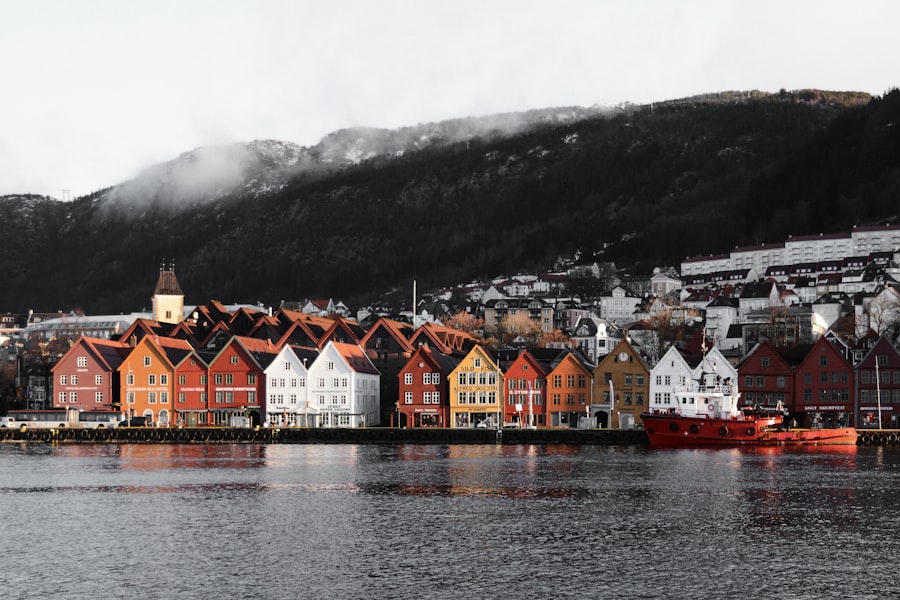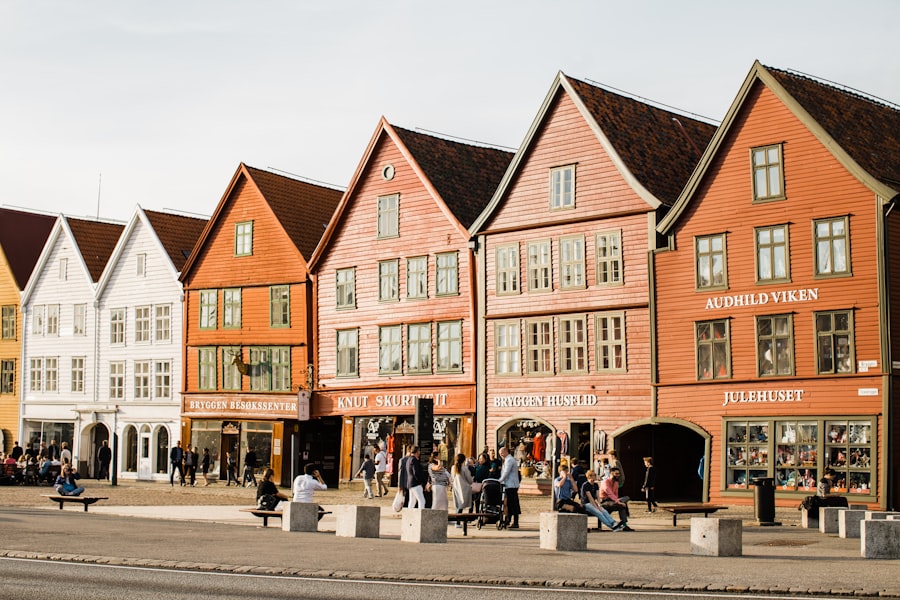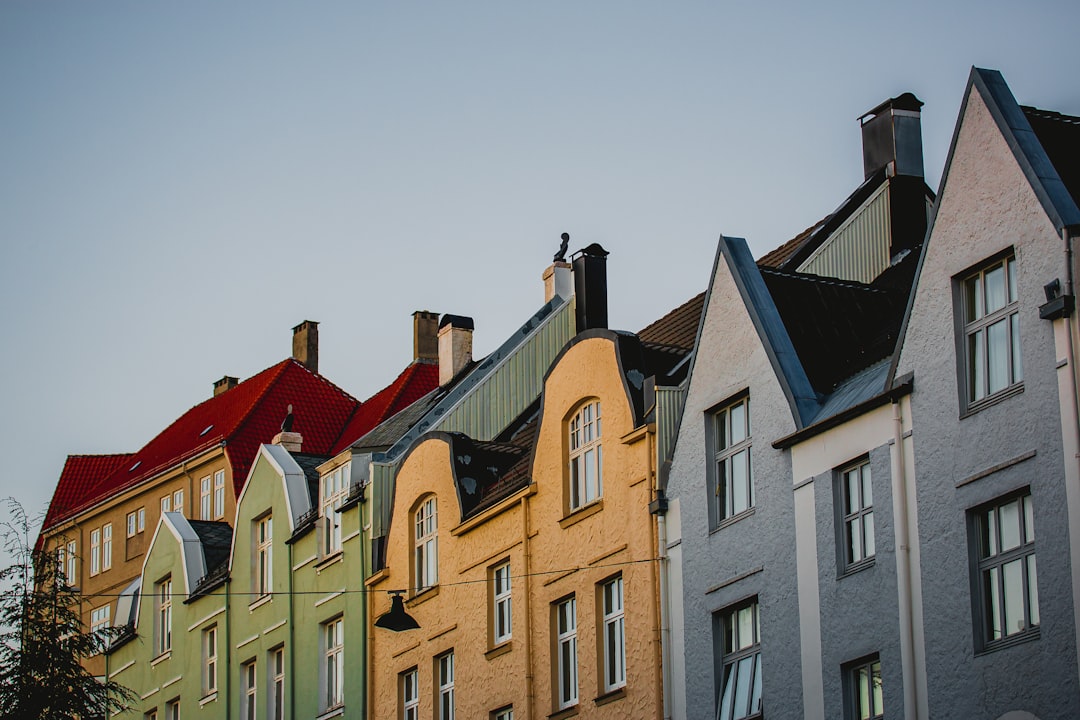The celebration of Påske, or Easter, in Norway has deep-rooted origins that intertwine both pagan and Christian traditions. Historically, the arrival of spring was a significant event for Norwegians, marking the end of the long, harsh winter. The word “Påske” itself is derived from the Hebrew “Pesach,” which refers to the Jewish Passover, a festival that shares themes of rebirth and renewal.
As Christianity spread throughout Norway in the 10th century, these ancient customs began to merge with the new religious practices, creating a unique blend that characterises Norwegian Easter celebrations today. In the early days, Norwegians celebrated the arrival of spring with various rituals aimed at ensuring fertility and abundance. These included bonfires and feasts that honoured the earth’s awakening.
As Christianity took hold, these pagan customs were adapted to fit the narrative of Christ’s resurrection. Today, Påske is a time for reflection, family gatherings, and community celebrations, all while retaining echoes of its ancient origins. The intertwining of these traditions has created a rich tapestry of cultural practices that continue to evolve. Your journey to a smooth relocation starts here. Talk one-on-one with a Norway Relocation specialist and turn your plan into a reality.
Summary
- Påske in Norway has its origins in both pagan and Christian traditions, blending ancient spring celebrations with the Christian Easter holiday.
- Traditional Påske foods in Norway include dishes like lamb, cured meats, and a variety of desserts such as marzipan and chocolate eggs.
- Decorating for Påske in Norway involves using birch branches, colourful feathers, and painting and decorating Easter eggs.
- Påske in Norwegian folklore and mythology is rich with tales of witches, trolls, and other supernatural beings.
- Beyond skiing, Påske activities in Norway include hiking, cabin trips, and various community events and festivities.
Religious Traditions and Celebrations
Religious observances during Påske are central to many Norwegians, reflecting the holiday’s significance as a time of spiritual renewal. The week leading up to Easter Sunday is known as “Stille Uke” or “Holy Week,” during which various church services are held to commemorate the events leading up to Christ’s crucifixion and resurrection. Many families attend church on Maundy Thursday, Good Friday, and Easter Sunday, participating in solemn services that include readings from the Bible, hymns, and prayers.
In addition to church services, many Norwegians engage in personal reflection and prayer during this time. It is common for families to gather for meals that incorporate traditional dishes, fostering a sense of togetherness and gratitude. The religious aspect of Påske is not only about attending services but also about embracing the values of love, forgiveness, and hope that are central to the Easter message.
This spiritual dimension adds depth to the celebrations, making it a time for both personal and communal renewal.
Traditional Påske Foods and Recipes

Food plays a pivotal role in Norwegian Påske celebrations, with traditional dishes that reflect the season’s themes of renewal and abundance. One of the most popular dishes is “lammestek,” or roast lamb, which is often served as the centrepiece of the Easter meal. Lamb has long been associated with sacrifice and rebirth in Christian symbolism, making it a fitting choice for this significant holiday.
Accompanying the lamb are seasonal vegetables such as carrots and potatoes, often prepared in simple yet delicious ways. Another beloved tradition is the baking of “påskekake,” or Easter cake. This sweet treat is typically adorned with colourful icing and decorations that reflect the joy of the season.
Recipes vary from region to region, but common ingredients include almonds, citrus zest, and spices that evoke the flavours of spring. Families often come together to bake these cakes, creating cherished memories while passing down culinary traditions from one generation to the next. The emphasis on sharing food during Påske highlights the importance of community and togetherness during this festive time.
Decorating for Påske: From Birch Branches to Easter Eggs
Decorating for Påske is an integral part of the celebration, with many households embracing vibrant colours and symbols associated with spring and renewal. One popular tradition involves using birch branches adorned with colourful feathers and eggs. These branches are often placed in vases around the home as a symbol of new life and growth.
The act of decorating birch branches is not only a creative endeavour but also a way to connect with nature as it awakens from winter slumber. Easter eggs also play a significant role in Norwegian decorations. Traditionally painted in bright colours and intricate designs, these eggs are often hidden for children to find during Easter egg hunts.
This playful activity brings joy to families and reinforces the themes of discovery and renewal associated with the holiday. In recent years, many families have embraced DIY projects to create unique decorations that reflect their personal style while honouring traditional practices. The act of decorating together fosters a sense of unity and excitement as families prepare for the festivities.
Påske in Norwegian Folklore and Mythology
Norwegian folklore is rich with tales that celebrate the arrival of spring and the themes associated with Påske. One such tale involves “Påskekyllingen,” or the Easter chick, which represents new life and rebirth. This character has become a beloved symbol during the holiday season, often featured in decorations and children’s stories.
Folklore also includes various myths about nature spirits awakening from their winter slumber, bringing fertility to the land. Additionally, many Norwegians believe that certain customs can influence the weather during Påske. For instance, it is said that if it snows on Easter Sunday, it will bring good luck for the rest of the year.
These beliefs reflect a deep connection between nature and cultural practices, highlighting how folklore continues to shape modern celebrations. By sharing these stories with younger generations, Norwegians keep their rich cultural heritage alive while instilling a sense of wonder about the world around them.
Påske Activities Beyond Skiing: Hiking, Cabin Trips, and More

While skiing is undoubtedly a popular activity during Påske in Norway, there are numerous other ways to enjoy this festive season amidst nature’s beauty. Many families take advantage of the long Easter weekend by heading to their cabins in the mountains or by lakesides for relaxation and outdoor adventures. These cabin trips provide an opportunity to disconnect from daily routines and reconnect with loved ones in a serene setting.
Hiking is another cherished activity during this time as snow begins to melt and trails become accessible again. Families often embark on scenic hikes to witness the awakening landscape, enjoying breathtaking views while soaking up the fresh air. The combination of physical activity and quality time spent together fosters a sense of camaraderie and appreciation for Norway’s stunning natural beauty.
Whether it’s a leisurely stroll or an adventurous trek, these activities create lasting memories that define the essence of Påske.
Community Events and Festivities During Påske
Community events play a vital role in celebrating Påske across Norway, bringing people together in joyous festivities. Many towns organise Easter markets where local artisans showcase their crafts, offering handmade goods that reflect Norwegian culture. These markets provide an opportunity for families to shop for unique gifts while enjoying traditional foods such as “pølse med lompe” (sausage in flatbread) or sweet pastries.
In addition to markets, various cultural events take place during this time, including concerts and performances that celebrate Norwegian music and dance traditions. Local schools often host Easter-themed activities for children, fostering a sense of community spirit among families. These events not only enhance the festive atmosphere but also strengthen social bonds within neighbourhoods as people come together to celebrate shared traditions.
Påske Crafts and DIY Projects for the Whole Family
Crafting is an enjoyable way for families to engage with each other during Påske while creating beautiful decorations for their homes. One popular DIY project involves making decorative Easter eggs using various techniques such as painting or decoupage. Children can unleash their creativity by designing unique patterns or themes that reflect their personalities.
Another fun craft idea is creating handmade cards or gifts for friends and family members. These personalised creations can be adorned with spring motifs like flowers or bunnies, adding a heartfelt touch to traditional greetings. Engaging in these activities not only fosters creativity but also strengthens family bonds as everyone collaborates on projects together.
The joy of crafting becomes an integral part of celebrating Påske, allowing families to express their love through handmade tokens.
Påske Music and Dance Traditions
Music and dance are essential components of Norwegian culture, and during Påske, these traditions come alive in various forms. Folk music often features prominently during this time, with many communities hosting concerts or gatherings where traditional songs are performed. Instruments such as fiddles and accordions create lively melodies that encourage dancing and celebration.
In addition to folk music, contemporary artists often release special Easter-themed songs that resonate with modern audiences while honouring traditional elements. Dance performances may also take place at local festivals or community events, showcasing traditional Norwegian dances that tell stories through movement. These musical expressions not only entertain but also serve as a means of preserving cultural heritage while bringing people together in joyous celebration.
Påske in Modern Norway: How the Holiday is Celebrated Today
In contemporary Norway, Påske has evolved into a multifaceted celebration that blends traditional customs with modern influences. While many families still adhere to religious observances and age-old practices, there is also an increasing emphasis on leisure activities such as travel and outdoor adventures during this holiday period. The long Easter weekend provides an opportunity for Norwegians to escape their daily routines and explore new destinations within their beautiful country.
Moreover, social media has transformed how people share their experiences during Påske. Families often post pictures of their festive meals, decorations, and outdoor activities online, creating a sense of connection among those who celebrate across different regions. This digital sharing allows for a broader appreciation of Norwegian culture while inspiring others to partake in similar traditions.
As Norway continues to embrace modernity while honouring its rich heritage, Påske remains a cherished holiday that reflects both continuity and change.
Tips for Experiencing Påske in Norway as a Visitor
For visitors looking to experience Påske in Norway, there are several tips to ensure an enriching experience during this festive season. Firstly, consider participating in local community events or markets where you can immerse yourself in Norwegian culture while sampling traditional foods and crafts. Engaging with locals will provide insight into their customs and enhance your understanding of this unique celebration.
Additionally, exploring Norway’s stunning landscapes through hiking or cabin trips can offer an authentic experience of how Norwegians celebrate nature’s awakening during this time. Be sure to try traditional dishes such as roast lamb or påskekake at local restaurants or even attempt cooking them yourself using recipes shared by locals. Lastly, learning some basic Norwegian phrases can go a long way in connecting with residents during your visit.
The Norway Relocation Group can assist you in navigating cultural nuances while providing resources for language learning through courses at institutions like NLS Norwegian Language School in Oslo. By embracing both tradition and modernity during your visit to Norway at Påske time, you will create lasting memories while gaining a deeper appreciation for this vibrant culture.
Register for a Norwegian class at the NLS Norwegian Language School now!

